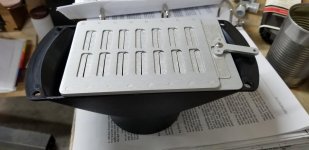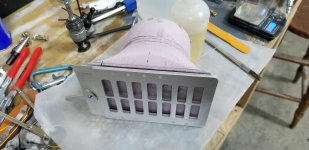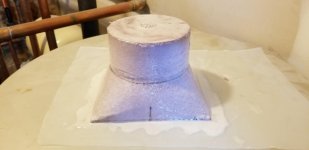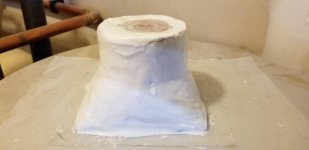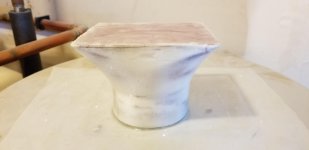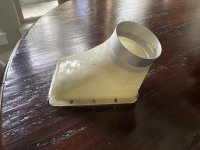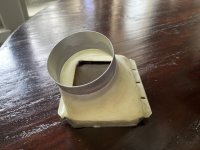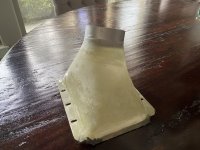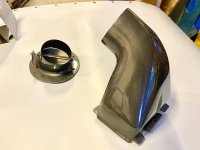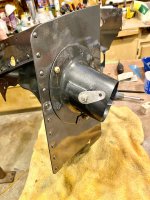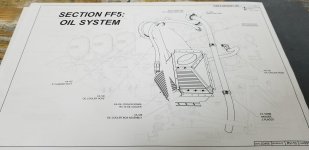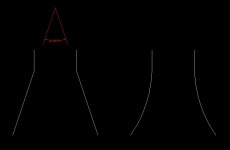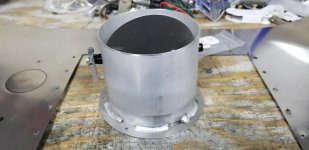Larry,
My concern for the shutters is that when 'wide open' they still present a fairly significant obstruction to the flow into the cooler. For the parallel-valve 360 engines this seems to be fine - they are really easy to cool the oil. For angle valve engines, (or any engine with piston oil squirters) there is a lot of heat load in the oil, and when it is warm out, you are going to want full cooling.
So, I favor a butterfly valve/throttle valve type control, right at the flange where the 4" tubing attaches to the back of the cooling baffle. I made my own, but I think you can buy them in a section of 4" aluminum tubing that you can insert in the middle of the 4" tubing run, or you could cut one side close to the valve bushings and have a flange welded onto it to attach to the cooling baffle. Take a look at the one that Don Broussard posted in post #5.
Where you make the transition from the 4" round tubing to the face of the oil cooler, you are slowing the flow down and you want the flow evenly distributed over the face of the cooler. If that transition is too abrupt, or has sharp corners, you basically get a 4" diameter jet of flow impinging on the face of the cooler, and then recirculating around in there. Now....it is not really that big a deal, since the flow velocity is fairly slow in the 4" tube, so the pressure loss is not very big even with an abrupt transition. But you would like to do the best you can. If you are going to make a custom fiberglass adapter, shape it well. As I said, Brian Decker's, pictured in post #4 is very good. Note that it takes some length to make a good transition, and that often dictates angling off in some direction. That is OK. The idea is to get the flow velocity low as it approaches the cooler. And if the velocity is low, it doesn't matter much what direction it is going. It will get slurped into the cooler by the large pressure differential.
The one redeeming aspect of the firewall cooler mount/adapter for the RV-10 is that it takes in air perpendicular to the cooler face, and forces it to distribute evenly over the face of the cooler by virtue of the triangular shape which reduces area as the flow progresses along the face of the cooler. As long as the incoming velocity is low, this is not too bad. But not as good as a smooth diffuser-type transition.
I have just one quick and poor quality pressure measurement on my old arrangement which had 3.5" scat tubing rather than 4", and the adapter for the cooler was very similar to what Van sells for the RV-10 firewall mount, so pretty abrupt. With the 3.5" scat tube, the velocity coming into the adapter/mount is fairly fast. In that one measurement, the upper cowl plenum pressure was about 10" of water, the lower cowl pressure (and the oil cooler outlet pressure) was about 1.4" of water, and the pressure at the oil cooler inlet was about 5.5" of water. In other words, I had lost half of the available pressure to drive flow thru the cooler in the 3.5" duct and abrupt transition to the cooler. I don't have measurements on my new system yet which has a 4" smooth tube duct and a transition that looks very much like the one Brian Decker made.
